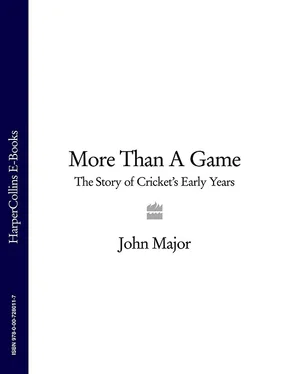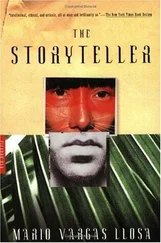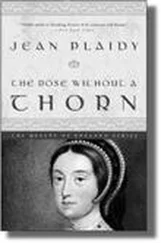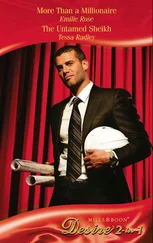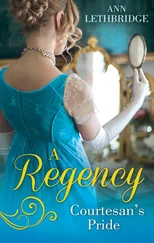In 1638 the Honourable Artillery Company was presented with land at Finsbury in London that would in time become one of the most famous of the early cricket grounds. Intriguing mentions of cricket abroad now begin to appear from time to time: Adam Olearius’ Voyages and Travels of Ambassadors (1647; English translation 1662) suggests that in Persia (now Iran) a form of cricket was played. If so, it has yet to enter the sporting bloodstream of the nation, and it is hard to imagine Mullahs and Ayatollahs looking any more kindly on the game than did seventeenth-century Puritans. It is more likely to be a confusion in the translation.
In England, cricket-lovers continued to be prosecuted, the court hearings they faced being among the handful of mentions of the game during the seventeenth century. More Sabbath-breakers faced the archdeaconry court in Midhurst, Sussex, in 1637, when eight players were fined and ordered to make public penance. It is a tribute to cricket that it survived such disapproval.
If the misbehaviour of parishioners shocked the Church elders, they were dumbfounded when one of their own, the Reverend Henry Cuffin, was charged in 1629. Cuffin, a young curate of Ruckinge, Kent, and presumably as godly as his cloth, was censured for playing cricket ‘in very unseemely manner with boyes and other very meane and base persons of our parrishe to the great scandal of his Ministerie and offence of such as sawe him play at the said game’. His defence was a stiletto in the ribs of those who peppered the charge with the unsuitability of the curate consorting with ‘very meane and base persons’. Not so, said Cuffin, he had been playing with ‘persons … of repute and fashion’. And moreover, he added that he ‘doth diligentlie serve the Cure of Ruckinge’. It is not clear whether Reverend Cuffin would have accepted the charge meekly if he had been playing with the peasantry, but the presence among his fellow cricketers of ‘persons of repute’ made him belligerent in his defence. There is no record that he was censured, fined or ordered to make public penance, but the whole episode, apart from casting a light on the class-consciousness of the time, tells us that the peasants’ game was moving upmarket.
A few years earlier, in 1625, an ill and near senile King James I had died unlamented, and his son, more talented and fitted for the throne in every way but one, succeeded him as Charles I. But his one defect was fatal – a stubborn determination to exercise absolute rule in an age when the spirit of the nation was for greater democracy. Charles did not seem to care, or perhaps even to notice, that his behaviour was draining support from the monarchy. He caused offence to friend and foe alike, making no effort to humour Parliament or people. He courted widespread disapproval by marrying a Catholic, Henrietta Maria of France, agreed only reluctantly to the Petition of Right, and declined to address grievances. He made promises only to break them. He persecuted the Puritans, who were mutilated, imprisoned and forced to flee the country. *But the cropping of ears, branding of bodies and slitting of noses increased dissent rather than deterring it. The struggle became severe, culminating in the Civil War, the execution of the King in 1649 and the birth of the Commonwealth with Cromwell at its head and Puritanism as its faith.
Oliver Cromwell is one of the great figures of English history, and he held a special fascination for me as by far the most illustrious Member of Parliament for my own constituency of Huntingdon. He and I are the only Members from that seat – thus far – to head a government. Cromwell became leader after a civil war in the country; I became leader as a civil war erupted within the Conservative Party. In each case, our enemies were implacable. Cromwell, General of the New Model Army and Lord Protector of the Commonwealth, was said by his foes to have enjoyed a boisterous youth. Whether this is true or not, his adult life was uneventful until, in his forties, he was propelled to the forefront of English life. As a private man he was commonplace. As a General, he was superb. As Lord Protector, his virtues and failings were on a grand scale; he can be mentioned with justice alongside Caesar and Napoleon.
The downside of Puritanism was that it robbed the Church of charity and put a premium on cant and piety. The prigs were in control. Lives were disrupted. Theatres were closed. Drama was stigmatised. The arts were restrained, and an anti-clerical feeling took root that would one day welcome the restoration of the monarchy. During the years of the Commonwealth poetry was the only art that prospered, thanks to the mighty imagination of Milton. It is an anomaly that Milton was a supporter of Puritanism: he was so by default, in his opposition to the excesses of an autocratic King. But neither his blindness, nor his gout, nor his many disappointments and hardships, could dim his advocacy of the liberty of the press and the elimination of prejudice, or his belief in taxation by the people, not the crown. He did not advocate the freedom to play cricket, or even deign to notice the game. Milton’s nephew Edward Phillipps was, however, familiar with cricket. In a poem written in 1658, entitled ‘Treatment of Ladies as Balls and Sports’, he wrote: ‘would that my eyes had been beaten out of my head with a cricket ball the day before I saw thee’. He was not always so averse to women, his preferred recreation being more basic: ‘Ellen, all men command thy eyes/ Only I command thy thighs,’ he wrote in ‘The Art of Wooing and Complementing’ (1655).
The Church, in its rigorous crackdown on Sunday cricketers, was a mild pre-echo of a Puritan ethic that sank deep into the British soul. It is, after all, not all that many years ago that professional cricket was prohibited on Sunday, as the spirit of the Lord’s Day Observance Society held sway with much of contemporary opinion. Puritanism was tough on recreation, and it is unsurprising that cricket was targeted: the austere piety of the Puritans’ beliefs, and their determination to make people devout, was bound to be in conflict with the exuberant joy of a ball game. *
But the courts did not always convict. At the Kent assizes held at Maidstone on 27 July 1652, six men of Cranbrook were accused of playing ‘a certain unlawful game called cricket’, but were acquitted as, to the horror of the Church, the justices ruled that the game was not unlawful. It was a rare blemish for the killjoys that was soon to be corrected at Eltham, Kent, in 1654, when seven players were fined two shillings each by the churchwardens for playing on the Sabbath. Four parishioners of Hunton, Kent, were similarly charged in 1668. Even after the restoration of Charles II and the end of Puritan government in 1660, some of the old attitudes still prevailed. In May 1671 Edward Bound was held to be ‘in contempt of the law of England’ and ‘a bad example to others’ for playing cricket on a Sunday. However, he was luckier than earlier miscreants, and was exonerated under the General Pardon Act.
Cricket remained largely an amusement of village peasants. There are mere glimpses of the game through the lost seventeenth century. In 1611, Randle Cotgrave’s French–English dictionary translated ‘ crosse ’ as ‘a cricket staffe’ and ‘ crosser ’ as ‘to play at cricket’, thus fuelling the occasional claim, surely erroneous, that ‘ criquet ’ is of French origin. Nor is it the case, as often claimed, that ‘ criquet ’ was played in France in 1478 before spilling across the Channel. There is no medieval text identifying ‘ criquet ’ as a game, since it was not: ‘ criquet ’ was, and is, the French name for an insect similar to a grasshopper, just as ‘cricket’ is in English. Moreover, an examination of the original text that has misled historians shows that the word ‘ criquet ’ was not actually used at all: it was in fact ‘ etiquet ’, meaning a ‘small stick’. The text reads: ‘ une lieu où en jouoit a la boulle pre d’une ataché ou etiquet ’ (‘a place where people were playing at boulle near a stake or peg’ – ‘ boulle ’ probably being the game of boulles, or a forerunner of it, which to this day remains so popular in France). *A further indication that cricket did not originate in France comes from a Swiss visitor, César de Saussure, one hundred years later, who reported, ‘The English are fond of a game they call cricket.’ **The English, not the French.
Читать дальше
